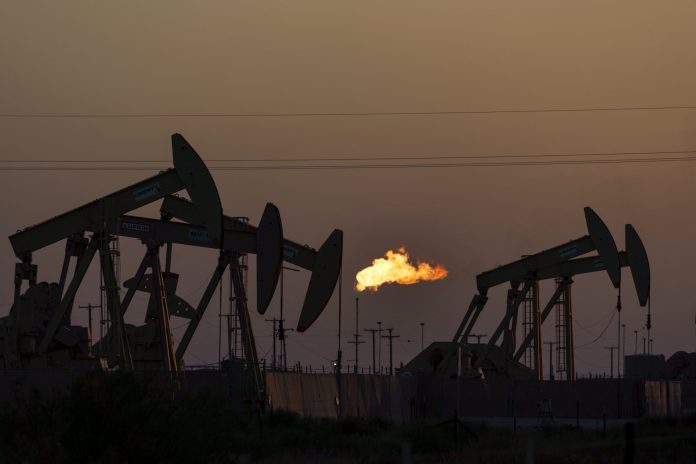
If the Biden Administration and U.S. Environmental Protection Agency expected opposition or consternation from the energy industry about their new methane reduction rule, it ain’t happening.
In fact, the industry generally backs the initiative while suggesting that revisions may eventually be in order.
Occidental Petroleum spokeswoman Jennifer Brice said Wednesday from Houston that her company “supports the regulation of methane emissions from oil and gas operations.
“We are committed to working with environmental groups and regulators to advocate for environmentally sound state and federal regulations that achieve methane reductions, incentivize early action and support flexibility and innovation,” Brice said. “Oxy used the same approach for the EPA’s methane rule and commented in support of the EPA’s expanded framework for federal methane regulations.
“We are reviewing the final rule to evaluate how the EPA incorporated feedback on the proposal. Oxy is committed to responsible environmental performance to proactively reduce methane emissions.”
Texas Pipeline Association President Thure Cannon said from Austin that the industry “has long been fully committed to reducing methane emissions while delivering the hydrocarbons that Americans rely on every day such as crude oil, petroleum products and natural gas.
“Not only are Texas midstream companies economically incentivized to protect against any loss of the molecules that they are contracted to transport for their customers, but they are also wholly committed to protecting the environment,” Cannon said Wednesday. “They achieve both of these goals through a wide variety of voluntary and government-imposed measures including the use of advanced technologies and materials, regular inspection and monitoring, environmental impact assessments, pipeline integrity management programs and emergency response plans.
“Industry-led initiatives have had dramatic results. In 2022, the Permian Basin reached its lowest methane intensity yet at .12 of a percent during a record production year, continuing the region’s success in producing more and emitting less. Texas pipeline companies stand with the entire industry to implement its already stringent measures and best practices to continue to achieve these monumental improvements.”
From Washington, D.C., the Independent Petroleum Association of America said Tuesday that its members “will be evaluating the EPA’s New Source Performance Standards revisions and its Emissions Guidelines mandating new state existing source regulations.
“The new source requirements will impose complicated new requirements and the 2022 existing source requirements have been estimated to lead to the shutdown of 300,000 of the nation’s 750,000 low production wells, wells that are essential to our country’s energy production,” an IPAA spokesman said.
“The Producers’ Associations support the cost-effective management of methane and volatile organic compounds emissions related to the oil and natural gas production industry that achieve sound environmental benefits while reflecting the significant differences between aspects of the industry.”
IPAA Officer of Environment and General Strategy Lee Fuller’s article in the December issue of World Oil magazine said oil and natural gas producers “are committed to effectively managing their methane and VOC emissions.
“At issue is developing appropriate techniques that reflect both the emissions profile and the economic challenges of each segment of the industry from large to small,” Fuller wrote. “It is too soon to know the full impact and issues in the EPA’s latest regulations.
“More analysis is necessary and some materials are not yet available. Perhaps after the full scope of the issues is understood, the EPA can be convinced to reconsider those aspects of these regulations and improve them.”
The Associated Press reported in December after the rule was announced that 50 oil companies representing nearly half of global production had pledged to end routine flaring by 2030.
The rule targets emissions from existing oil and gas wells nationwide rather than focusing only on new wells as previous EPA regulations have done. It also regulates smaller wells that will be required to find and plug methane leaks. Such wells had been subject to an initial inspection but were rarely checked again for leaks.
Studies have found that smaller wells produce just 6 percent of the nation’s oil and gas but account for up to half the methane emissions, the AP said.
A requirement will be phased in to eliminate the routine flaring or the burning of the natural gas that’s produced by new oil wells.
The rule carries a methane fee that charges energy producers that exceed a certain level of methane emissions as much as $1,500 per metric ton of methane, marking the first time the U.S. government has directly imposed a fee or tax on greenhouse gas emissions.
It allows exemptions for companies that comply with the EPA’s standards or fall below a certain emissions threshold and it includes $1.5 billion in grants and other spending to help companies and local communities improve monitoring and data collection and find and repair natural gas leaks.



